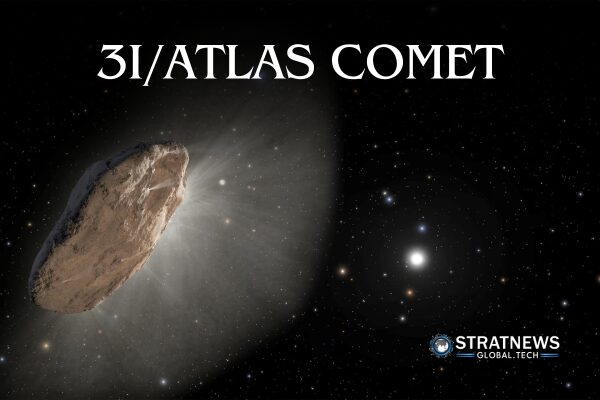ESA Captures Rare Images of Interstellar Comet 3I/ATLAS Near Mars
The European Space Agency (ESA) has released striking new images of 3I/ATLAS, an interstellar object believed to be a comet, speeding through space near Mars. The comet was captured by spacecraft orbiting the Red Planet, offering scientists a rare chance to study a visitor from beyond our solar system.
A Rare Visitor from Deep Space
According to NASA, the US space agency, 3I/ATLAS was first discovered on 1 July by the Asteroid Terrestrial-impact Last Alert System (ATLAS) telescope in Rio Hurtado, Chile. Travelling at an exceptional speed of about 37 miles (60 kilometres) per second — or 133,000 miles per hour — the comet is moving from the direction of the Milky Way’s centre. It is currently located on the far side of the sun, relative to Earth.
Only two other interstellar objects have ever been observed passing through our solar system: 1I/‘Oumuamua in 2017 and 2I/Borisov in 2019. The discovery of 3I/ATLAS adds to this short list, giving astronomers a new opportunity to study materials formed outside the solar system.
Massive Object Compared to Manhattan
Harvard astrophysicist Avi Loeb told Reuters that the recent Mars flyby observations confirm 3I/ATLAS is far larger and more massive than its interstellar predecessors. “We concluded that the mass is larger than 33 billion tons,” Loeb said. “At solid density, the object’s diameter is bigger than five kilometres, comparable to the size of Manhattan.”
These findings suggest 3I/ATLAS could provide valuable clues about how large icy bodies form in distant star systems.
Future Flyby of Jupiter Expected
NASA’s Mars probes also captured data and images of the comet, though these will not be released until after the current US government shutdown, which has reduced the agency’s operations to essential staff only.
The comet is expected to continue its journey through the solar system before exiting into deep space. However, it will make one more close approach — a flyby of Jupiter — giving researchers another opportunity to gather observations using spacecraft orbiting the gas giant.
with inputs from Reuters


